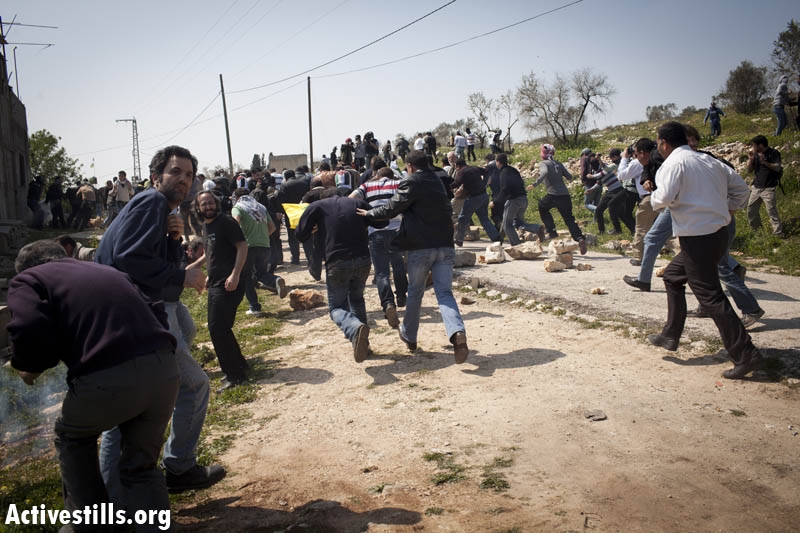Tag: Arrests
-
Israel’s dogs will not keep Kufr Qaddoum from reaching justice
by Amal 26 March 2012 | International Solidarity Movement, West Bank Neither the attack dog or the dogs of the Israeli court system could keep Ahmed’s spirits down. He held his head up high as he walked into the court room, even while shackled by his feet and hands. His court hearing was rescheduled for a week from…
-
Amani al Khandaqja, defender of prisoner rights, becomes a prisoner herself
by Robin and Axel 21 March 2012 | International Solidarity Movement, West Bank Early Monday morning, on the 20th of March, Israeli soldiers raided a Palestinian home in the occupied West Bank city of Nablus, terrorized a family and arrested a young woman named Amani Al Khandaqja. The soldiers arrived at 2am, whilst the family…
-
Awaiting release and hearings of local activists, Kufr Qaddoum met with more Israeli violence
by Robin and Leila 23 March 2012 | International Solidarity Movement, West Bank It was under a bright, sunny sky that the people of Kufr Qaddoum once again gathered to protest against the roadblock which isolates them from the rest of the West Bank. The past week there had been much frustration and anger since Murad Ashtawi, member…



